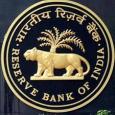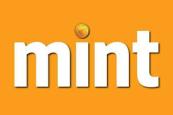This column, provided here to illustrate Mr. Tarapore's sharp focus on the common person and his depth of understanding of the core issues at hand, was written ahead of the monetary policy announcement of May 2011. It was released then as part of Mr. Tarapore's multi language syndicate service.
The Reserve Bank of India (RBI) is scheduled to announce its first quarterly monetary policy review of 2011-12 on May 3, 2011. There would be considerable interest as each set of players would evaluate it from their own viewpoint. What then should the Common Person look for in the monetary policy?
The central anxiety, for quite some time, has been the acceleration of inflation. Inflation is hurting the vulnerable sections the most. What is the extent of inflation? There are various ways of measuring inflation but the official focus in India is on the year-on-year change in the Wholesale Price Index (WPI). This index does not correctly reflect the impact on consumers. The authorities are making efforts to have a comprehensive Consumer Price Index (CPI) and although this has been undertaken there is need for the new index to stabilize before it becomes relevant for policy purposes.
When mong dal prices rise from Rs 60 per kilo to Rs 100 per kilo the increase is 66.6 per cent, but when it rises further to 120 per kilo, we are told that the rate of increase has come down from 66.6 per cent to 20 per cent. Now when the price comes down to Rs 105 per kilo we are expected to rejoice and forget that a price of Rs 105 per kilo is historically very high causing great distress to the Common Person.
The RBI has many constraints in dealing with inflation. The RBI does not have a single inflation target while the issue of growth predominates and quite often inflation becomes a secondary objective to overall growth. Policymakers have repeatedly said that monetary policy should not do anything which would jeopardize growth. This has blunted the efficiency of monetary policy. RBI’s comfort zone was all along meant to be around a 5 per cent inflation and higher inflation rates would invite monetary policy action. In this context, the present episode of a prolonged high inflation rate has made a dent into RBI’s credibility. The RBI’s cherished goal of a medium-term inflation rate of 3 per cent is no longer talked about in policy circles.
The kind of inflation we now have is generalized and not restricted to a few sectors and it no longer makes sense to go on talking about supply side inflation.
It is heartening to see that the government is somewhat subdued on the issue of growth and now concedes that some sacrifice of growth would be necessary if inflation is to be brought under control.
The Common Person could live with the current inflation rate if it were a ‘true’ indicator of inflation which is commonly known to be much higher than what the official indices show. Moreover, what hurts the Common Person is not the rate of inflation but its level. Illustratively, It is time the Common Person is not deceived by these numbers and told the true story which would then push monetary policy to take stronger action to tackle inflation.
The RBI is at the cross roads. If it chooses the path of tightening monetary policy it would be criticized by vested interests, but if it does not it will be condemned by history for not alleviating the suffering of the masses.
t would be unfair to only blame the RBI as the problem lies elsewhere. The government wants its borrowing programme to go through smoothly without unduly high interests and at the same time expects that adequate credit is made available to the commercial sector. To meet these conflicting objectives, the RBI keeps the system sloshing with liquidity. This also enables banks to keep lending rates relatively low.
- What the RBI has done is to fix its current policy repo rate at 6.75 per cent (the repo rate is the rate at which RBI provides liquidity to banks against the security of government securities).The RBI has, over the past year or so, undertaken eight increase of the repo rate, each of ‘baby’ steps of 0.25 per cent. The current policy rate is totally ineffective. Given the present inflation rate, what is required is a full one percentage point increase in the repo rate but the present philosophy of the RBI would not permit it. The May 3, 2011 increase in the repo rate should be, at least, 0.50 per cent. The RBI would do well to take a leaf out of the Chinese central bank’s policy which prefers strong monetary policy action.
- The other powerful instrument is the cash reserve ratio (CRR) under which the RBI presently impounds 6 per cent of deposits of banks. An increase in the CRR by 0.50 per cent, which would impound Rs 25,000 crore of liquidity, would be appropriate. But the RBI has been shy of using this instrument during the past two and a half years. Here again, the RBI needs to closely study the active Chinese CRR policy.
A victim of the present monetary policy has been the depositor who faces negative real rates of interest as the return to depositors is less than the inflation rate. It is true that, in the February-March 2011 period, some banks offered rates as high as 10 per cent. This was largely to swell the balance sheet numbers for March 31, 2011. Predictably, these banks have, in early April 2011, cut back deposit rates by one percentage point.
Depositors are the mainstay of banks but they are not fairly remunerated. All that depositors can pray for is that the RBI, on May 3, 2011, shifts gears to undertaking a strong tightening of monetary policy. The RBI is at the cross roads. If it chooses the path of tightening monetary policy it would be criticized by vested interests, but if it does not it will be condemned by history for not alleviating the suffering of the masses.












